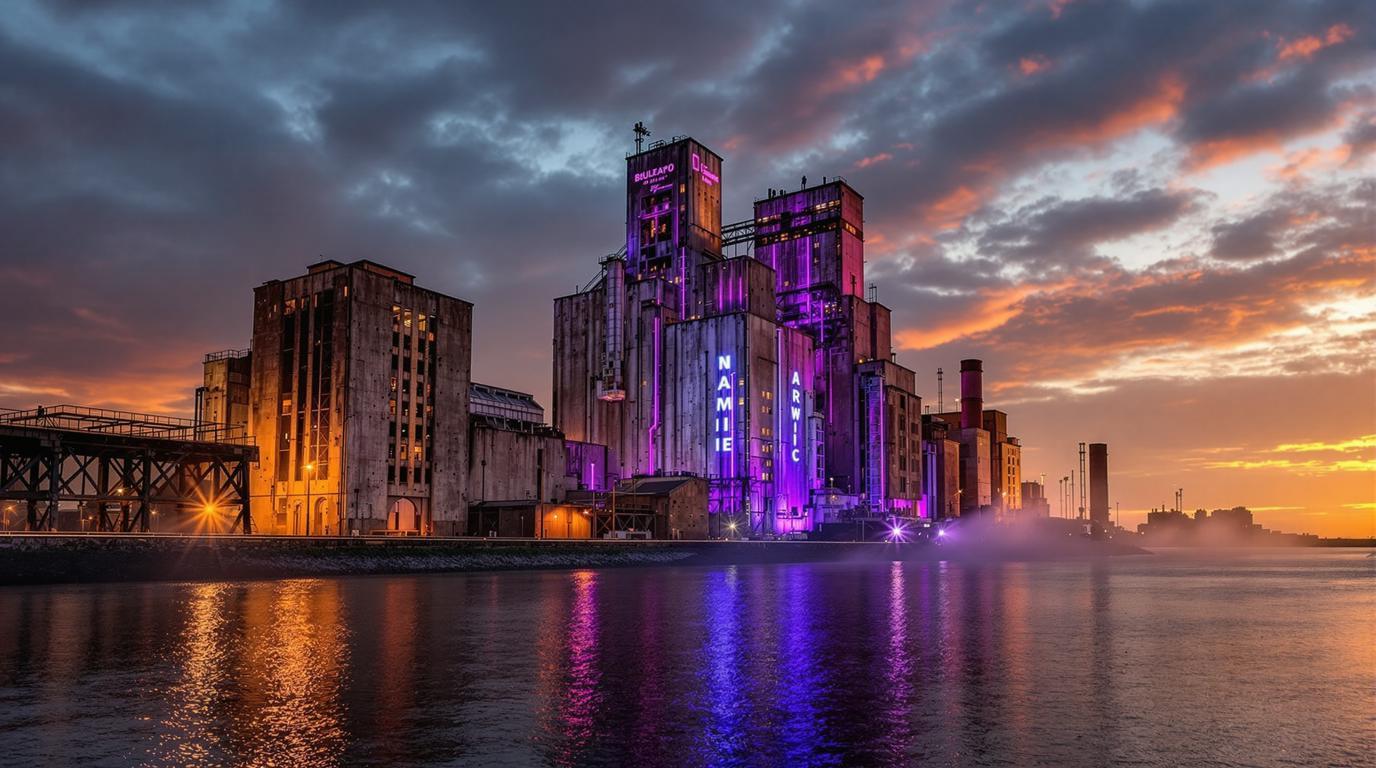The sliver of dawn light filtering through abandoned grain silos casts long shadows across Buffalo’s historic waterfront. I’m standing on a wooden dock that once received millions of bushels of Midwest wheat, now transformed into one of America’s most unexpected cultural revivals. Two decades ago, this section of Lake Erie shoreline was a post-industrial wasteland. Today, it pulses with renewed energy that few travelers ever discover.
Where rust belt resilience meets waterfront renaissance
Buffalo’s transformation from industrial powerhouse to cultural phoenix traces back to the 1825 Erie Canal completion, which once made this city America’s western gateway. The abandoned concrete grain elevators that punctuate the skyline — the largest collection in the world — now serve as massive canvases for light shows and art installations.
“We’re the underdogs who turned our industrial scars into our calling card,” says Mary Rodriguez, who leads kayak tours through the waterfront’s concrete canyon. “Visitors expect chicken wings and snow jokes. They leave understanding why we never wanted to live anywhere else.”
Unlike the polished waterfront developments you’ll find in cities like Paris with its hidden cultural treasures, Buffalo embraces its raw edges while creating something entirely new.
Discovering Buffalo’s waterfront secrets beyond the tourist trail
A concrete cathedral transformed by light and sound
At Silo City, a cluster of grain elevators dating to 1906, I join an evening tour led by a former grain worker. Inside the cavernous Marine A elevator, our voices echo like we’re standing in a concrete cathedral built for industrial gods. The 130-foot cylinders create acoustics so perfect that the Buffalo Philharmonic occasionally performs here.
My visit coincides with “Lighting Pathways,” when light artists project swirling colors across the concrete exteriors, transforming industrial relics into a canvas visible from across the harbor. The effect is mesmerizing — like watching the Northern Lights dance across Buffalo’s industrial past.
The floating forest hiding in plain sight
The next morning, I paddle toward what appears to be a small floating island. Times Beach Nature Preserve, a former industrial dumping ground, has transformed into a 50-acre urban wetland sanctuary where more than 240 bird species have been spotted.
Gliding silently through narrow channels bordered by cattails and willows, I spot a great blue heron fishing just yards from downtown skyscrapers. This improbable wilderness, like hidden gardens outside major cities, offers a reminder of nature’s persistence in the most unlikely places.
Waterfront flavors crafted from Great Lakes bounty
At Dug’s Dive, a weathered boathouse-turned-restaurant accessible only by foot or boat, I discover Buffalo’s culinary revolution extends beyond its famous wings. Chef Martin Danilowicz serves smoked Lake Erie perch tacos with pickled ramps foraged from nearby forests.
“The Great Lakes provided for this region long before industrialization,” Danilowicz explains, placing a board of house-cured lake fish before me. “We’re just returning to what sustained people here for centuries.”
The smoky-sweet fish paired with slightly sour ramps creates a perfect balance that captures Buffalo’s blend of rustbelt grit and natural abundance.
Navigating Buffalo’s waterfront like a local insider
Timing your exploration
Visit between June and September when waterfront activities reach their peak. Wednesday evenings bring free sunset concerts at Canalside, while Thursday night light shows illuminate the grain elevators from May through October.
Getting around
Skip the rental car. The 6.5-mile waterfront trail connects all major sites, with bright blue rental bikes available at five stations along the route. For a unique perspective, book a kayak tour through Elevator Alley Kayak — they’ll provide waterproof bags for cameras.
A waterfront that reflects America’s resilient spirit
As sunset casts an amber glow across Buffalo’s harbor, I watch an elderly couple dancing to distant jazz at Canalside. Behind them, a freighter passes silently against the backdrop of illuminated grain elevators. This waterfront embodies the authentic American story of reinvention — where what was discarded becomes cherished once again. Like many overlooked second cities across America, Buffalo reminds us that the most memorable travel experiences often wait just beyond the obvious, in places where past and future collide in unexpected harmony.
